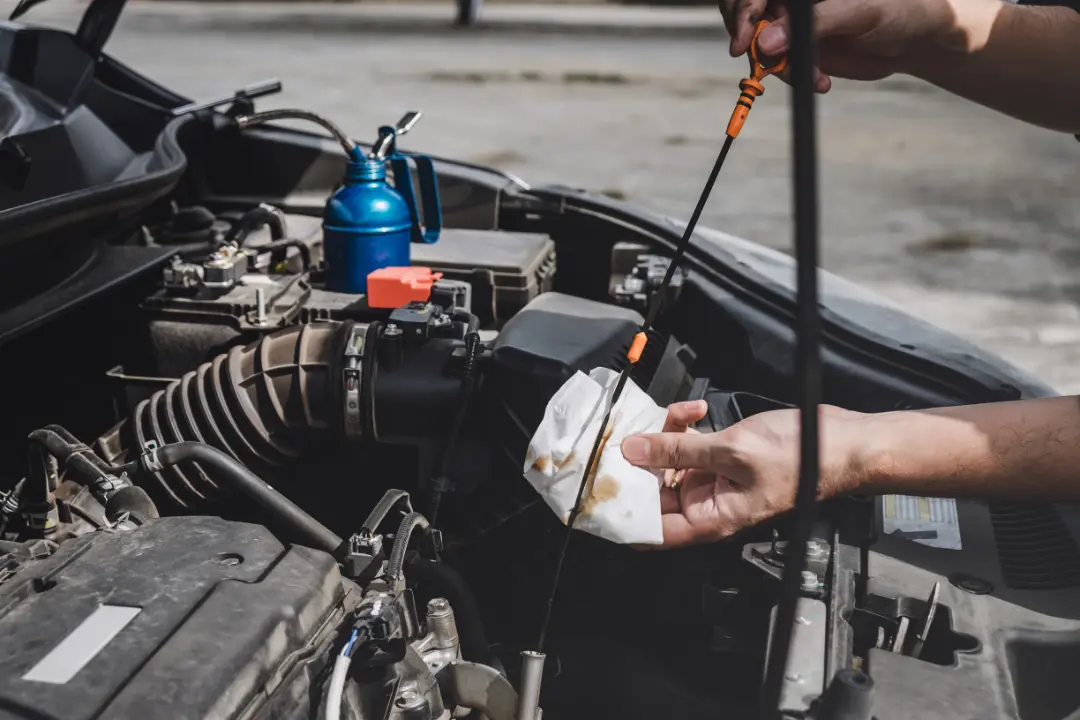Wondering if your tyres are safe for the road? Learn how to check tyre tread depth accurately and quickly, ensuring your safety and compliance with legal standards. By the end of this article, you’ll know exactly how to measure tread depth using simple tools and techniques.
Key Takeaways
- Tyre tread depth is essential for vehicle safety, impacting traction and reducing the risk of aquaplaning. Legal requirements in the UK and Europe stipulate a minimum of 1.6mm across the central three-quarters breadth, and safety experts recommend at least 3mm.
- Various methods exist for measuring tyre tread depth, including the 20p coin test, tread wear indicators, and a tyre tread depth gauge, the latter providing the most accurate measurement.
- Driving with insufficient tyre tread depth can lead to legal penalties, increased accident risk, and failing vehicle inspections such as the MOT. In contrast, proper tyre care and maintenance, including regular checks and rotation, can extend tyre and vehicle life.
Understanding Tyre Tread Depth
Tyre tread depth is not just a number; it’s a life-saving parameter that ensures your vehicle stays gripped to the road, handles reliably, and stops within a safe distance. Whether it’s a sunny day or a thunderstorm, tyre tread depth directly impacts your vehicle’s performance by optimising traction and minimising the risk of aquaplaning. Proper tyre tread maintenance is crucial for achieving these benefits.
However, driving with low tread depth can significantly impair braking performance, increase the risk of aquaplaning, and even lead to punctures or blowouts, with potential legal consequences.
Legal Minimum Tread Depth
If you’re in the UK or anywhere in Europe, your vehicle’s tyres must have a legal tread depth of at least 1.6mm across the central three-quarters breadth, which is the primary contact patch for vehicle grip on the road. During vehicle inspections like the MOT, this is the minimum tread depth requirement your tyres must meet to be considered roadworthy. It’s essential to regularly check your tyre tread depths to ensure compliance with the law.
So, check your tyre tread depth regularly to avoid landing on the wrong side of the law.
Recommended Tread Depth
While the legal minimum tread depth is 1.6mm, safety experts recommend maintaining a tread depth of at least 3mm for optimal safety and performance. This ensures better traction, reduced stopping distances, and improved handling in adverse conditions.
So, the next time you check your tyre tread depth, aim for the recommended 3mm to stay safe on the roads.
Easy Methods to Measure Tyre Tread Depth
Keeping track of your tyre tread depth doesn’t have to be daunting. There are three easy methods: the 20p test, tyre tread wear indicators, and the tyre tread depth gauge.
Let’s take a closer look at each of these methods.
The 20p Test
The 20p test is an easy and cost-free method to check your tyre tread depth. All you need is a 20-pence coin. Here’s how to do it:
- Insert the coin into the main tread grooves of your tyre.
- Insert the coin with the Queen’s head facing down.
- Check if the tread obscures the outer border of the coin.
If you obscure the outer border of the coin, your tread is likely above the legal limit. However, while this test is quick and doesn’t require special tools, it may not provide exact measurements and is less accurate than a dedicated tyre tread depth gauge.
Tyre Tread Wear Indicators
Tread wear indicators are another convenient way to check your tyre tread depth. These thin rubber strips within the tyre’s tread grooves become more visible as the tyre wears down, indicating that it is nearing its legal limit.
If you notice these indicators, it’s time to consider getting new tyres and replacing your worn ones.
Utilising a Tyre Tread Depth Gauge
A tyre tread depth gauge is your best bet for a more accurate tyre tread depth measurement. This precise tool measures the depth of individual tyre grooves, providing exact measurements in millimetres.
Insert the probe into the tread groove, ensure the gauge’s shoulders are flat against the tyre, and press down. The needle or digital readout will display the tread depth in millimetres.
Consequences of Insufficient Tyre Tread Depth
Driving with insufficient tyre tread depth is not just illegal; it’s downright dangerous. In the UK and Europe, if your tyres are below the legal tread depth limit, you could face a fine of up to £2,500 and three penalty points per tyre. If all four tyres are below legal limits, the maximum fine is a whopping £10,000, and you could even have your license revoked.
Moreover, insufficient tyre tread depth significantly increases the risk of aquaplaning, extends stopping distances, and elevates the overall likelihood of accidents, particularly in wet conditions. It can also cause your vehicle to fail the MOT test, preventing you from legally driving it on public roads until you rectify the issue.
So, always remember to check your tyre tread depth regularly to stay safe and on the right side of the law.
Maintaining Optimal Tyre Tread Depth
Maintaining optimal tread depth isn’t just about checking it regularly; it’s also about proper tyre care. Here are some tips to help you take care of your tyres:
- Seasonal tyre rotation: Switching between appropriate winter and summer tyres can enhance your vehicle’s safety and performance.
- Regular tyre inspections: Check for damage, such as cracks or bulges, and replace tyres if necessary.
- Replace tyres in matched pairs to avoid uneven wear and potential handling issues.
By following these tips, you can ensure your tyres last longer and perform better.
Additionally, regular tyre rotation every 6000 miles per your vehicle’s owner’s manual and ensuring your wheels are correctly aligned can result in more even tyre wear, extending the life of your tyres.
Remember, maintaining optimal tyre tread depth is not just about safety; it’s also about prolonging the life of your tyres and, by extension, your vehicle.
All Vehicle Services: Your Trusted Tyre Experts
When it comes to tyre safety, it’s best to trust the experts. All Vehicle Services, a reputable garage located in Sittingbourne, Kent, offers a variety of automotive services, including:
- Tyre services
- MOT tests
- Car servicing
- Diagnostics
With over 50 years of combined experience among its technicians, you can rest assured that your vehicle is in good hands.
Free Tyre Health Checks
To make things easier for you, All Vehicle Services provides a complimentary health check for vehicles, which includes a thorough assessment of your vehicle’s tyres to ensure they are in optimal condition.
So, why not take advantage of this free service and ensure your tyres are always in the best possible shape?
Expert Technicians
At All Vehicle Services, the team of technicians is:
- Experienced
- Professional
- Knowledgeable
- Dedicated to excellent service
With their extensive experience and proficiency in various vehicle servicing tasks, you can be confident that your vehicle will receive the highest quality service.
Convenient Booking and Prompt Service
All Vehicle Services offers top-quality service and prioritises convenience for its customers. With its efficient free online booking system, arranging MOT tests and other services is a breeze.
Their commitment to providing prompt services ensures that your vehicle gets the care it needs without any unnecessary delays.
Summary
In conclusion, tyre tread depth is more than just a bunch of grooves; it’s an essential parameter that directly impacts your vehicle’s performance and safety. Whether it’s a sunny day or a rainy night, maintaining the recommended tyre tread depth of 3mm ensures optimal traction, shorter stopping distances, and a lower risk of accidents.
Remember, driving with insufficient tyre tread depth is not just illegal; it’s dangerous. So, make it a habit to check your tyre tread depth regularly, and when in doubt, trust the experts. Let’s make our roads safer, one tyre at a time.
Frequently Asked Questions
What is the legal minimum tyre tread depth in the UK?
In the UK, the legal minimum tyre tread depth is 1.6mm across the central three-quarters breadth of the tyre. It’s important to regularly check and maintain your tyre tread depth to ensure safety on the road.
What is the recommended tyre tread depth for optimal safety?
You should maintain a tyre tread depth of at least 3mm for optimal safety and performance.
How can I check my tyre tread depth?
To check your tyre tread depth, you can use the 20p test, tyre tread wear indicators, or a tyre tread depth gauge. It’s important to monitor your tyre tread depth for safety regularly.
What are the consequences of driving with insufficient tyre tread depth?
Driving with insufficient tyre tread depth can lead to fines, penalty points, license revocation, increased risk of aquaplaning, extended stopping distances, and a higher likelihood of accidents. Regularly checking and maintaining proper tyre tread depth for safety is essential.
How can I maintain optimal tyre tread depth?
To maintain optimal tyre tread depth, perform regular inspections, rotate tyres every 6000 miles, ensure proper wheel alignment, and switch seasonally between appropriate winter and summer tyres. These practices help extend the life of your tyres and ensure safe driving.


